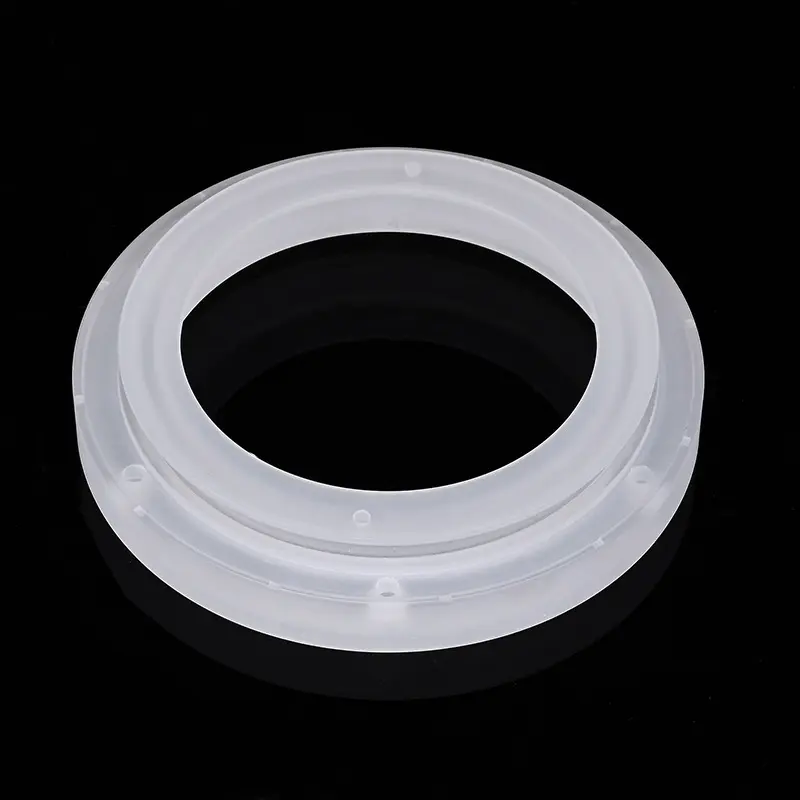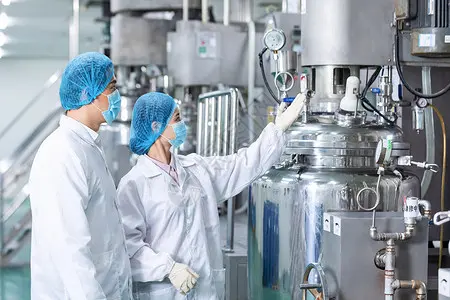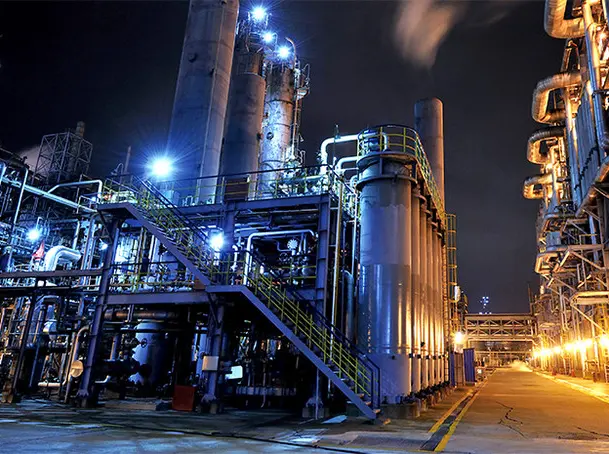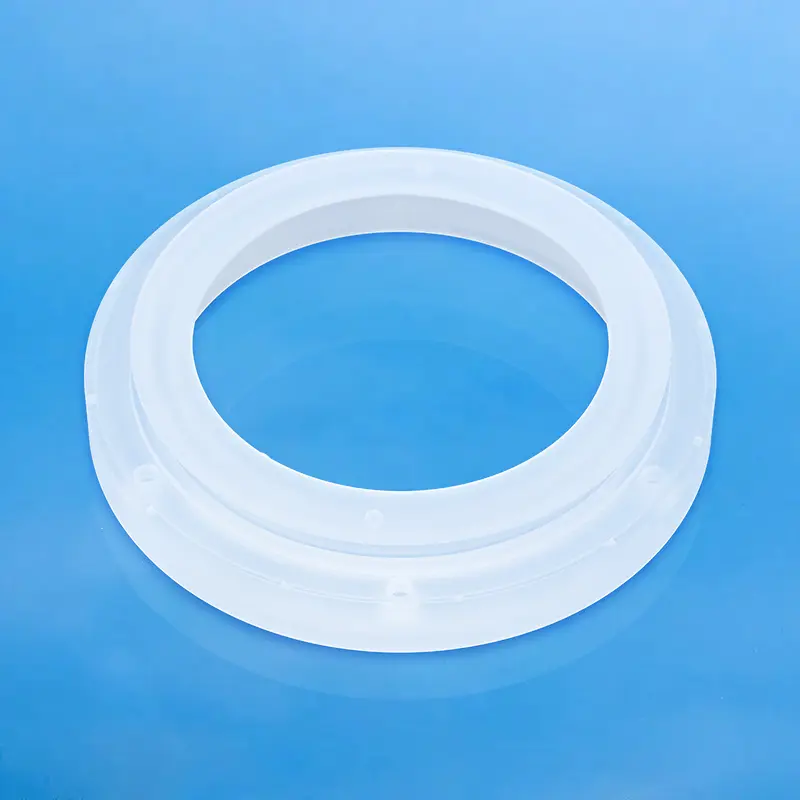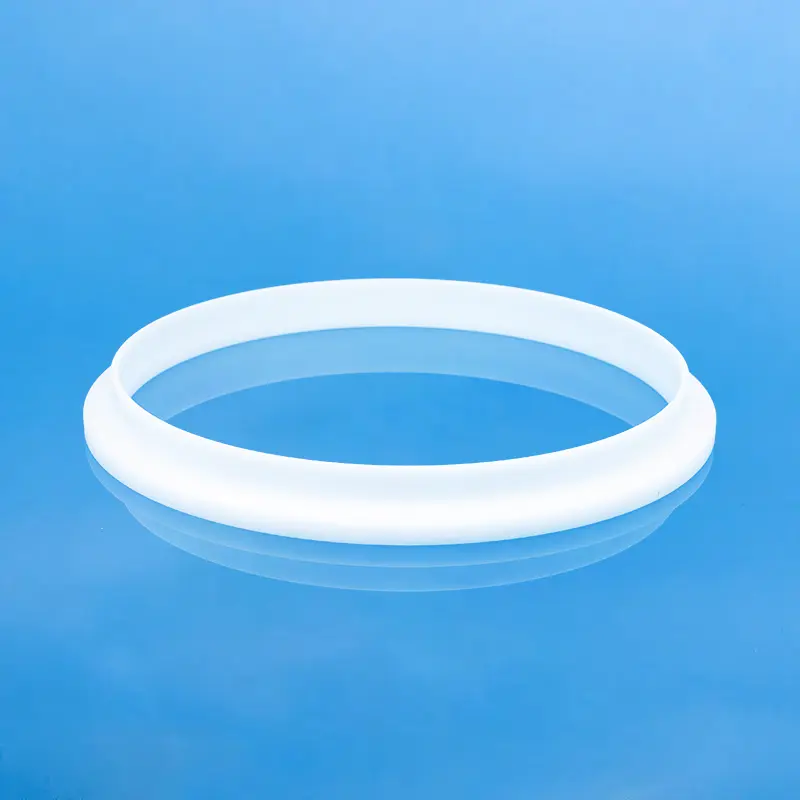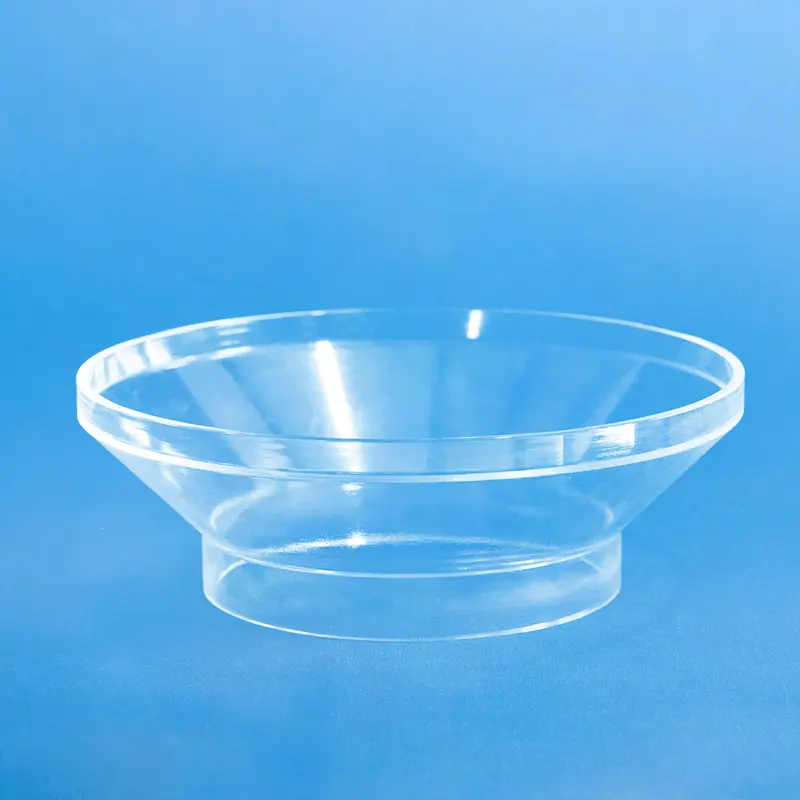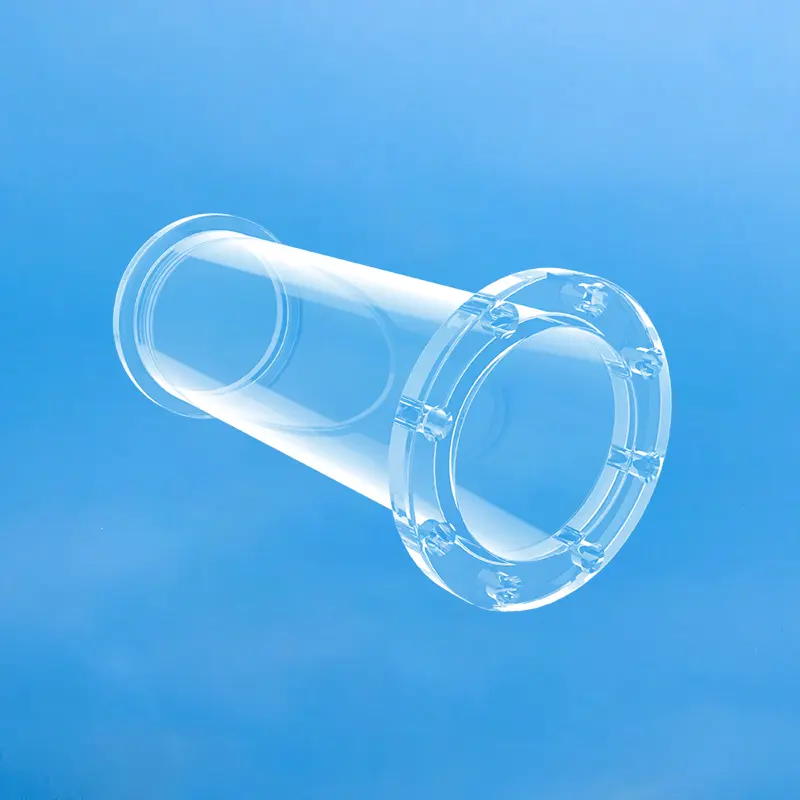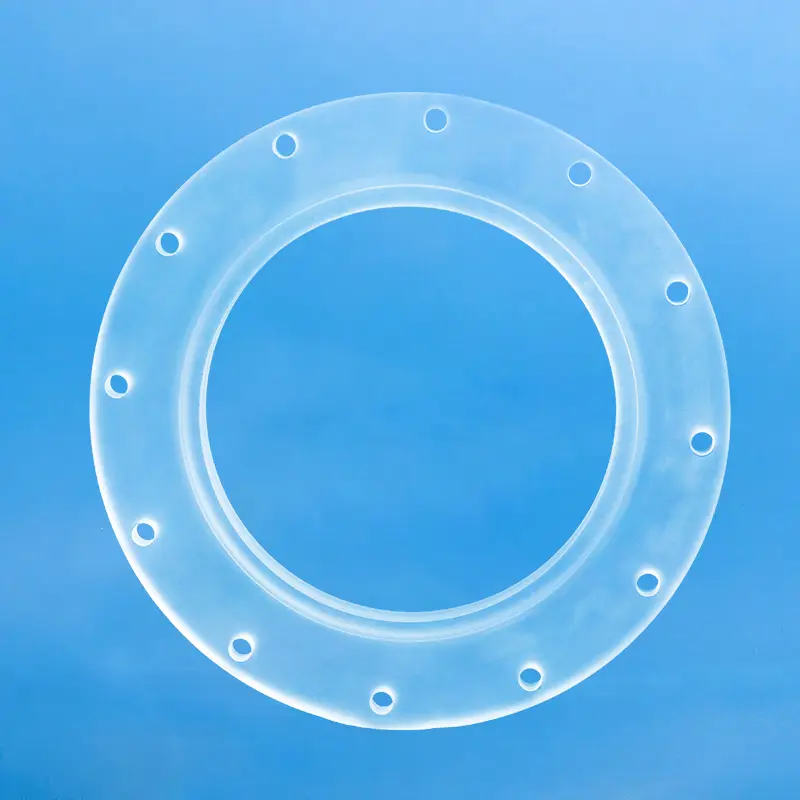Quartz flanges are high-performance pipe connection components made from high-purity quartz glass, characterized by their excellent corrosion resistance and high-temperature performance. They are widely used in industries such as chemical processing, pharmaceuticals, and bioengineering due to their ability to withstand extreme temperatures and chemical media, ensuring the stable operation and long-term reliability of piping systems.
| Contenido de la propiedad | Valores inmobiliarios |
|---|---|
| SiO2 | 99.99% |
| Densidad | 2,2×10³ kg/cm³ |
| Dureza | 5,5 - 6,5 Escala de Mohs 570 KHN 100 |
| Resistencia a la tracción | 4,8×10⁷ Pa (N/mm2) (7000 psi) |
| Resistencia a la compresión | >1,1×10⁹ Pa (160.000 psi) |
| Coeficiente de dilatación térmica | 5,5×10-⁷ cm/cm-°C (20°C-320°C) |
| Conductividad térmica | 1,4 W/m-°C |
| Calor específico | 670 J/kg-°C |
| Punto de ablandamiento | 1730°C (3146°F) |
| Punto de recocido | 1210°C (2210°F) |
| Punto de deformación | 1120°C (2048°F) |
| Temperatura de trabajo | 1200°C (2192°F) |
| Resistividad eléctrica | 7×10⁷ ohm cm (350°C) |
| Talla | Personalizado |
| Logotipo | Logotipo personalizado Aceptar |
High-Temperature Performance
Quartz flanges can withstand extremely high temperatures, typically above 1000°C, making them suitable for high-temperature environments, such as high-temperature steam pipes and molten metal transport systems.
Excellent Chemical Stability
Quartz flanges exhibit exceptional resistance to various chemical substances, including strong acids, strong bases, and organic solvents, which makes them highly favored in the chemical and pharmaceutical industries.
High-Purity Material
Quartz flanges are manufactured from high-purity quartz glass, allowing their use in cleanroom environments within the semiconductor and microelectronics industries as they do not release particles or chemicals that could contaminate products.
Good Mechanical Strength and Durability
Quartz flanges possess good mechanical strength and durability, maintaining their structural integrity even under repeated temperature and pressure fluctuations, thereby extending the lifespan of equipment.
Escenario de aplicación
Petrochemical Industry
Within the petrochemical industry, quartz flanges serve as important pipe connection components. They meet the requirements for harsh environments characterized by high temperatures, high pressure, and strong acids/bases. Their unique impact resistance makes them particularly useful for connecting pumps and valves.
Electronics and Electrical Industry
Quartz flanges are widely applied in the electronics and electrical industries, such as for connecting precision pipes in LED chip production, and oxide synthesis reactions in solar cell manufacturing. Their high purity and corrosion resistance ensure the precision connections and the purity and continuity of reaction processes.
The primary material of quartz flanges is high-purity quartz glass, which exhibits exceptional corrosion resistance and high-temperature performance. It can effectively resist the erosion of various chemical substances, including strong acids, strong bases, and organic solvents, while maintaining stability in high-temperature environments (typically exceeding 1000°C), without deforming or melting.
Quartz flanges are widely used in industries such as chemical processing, petrochemicals, electronics and electrical, and food manufacturing. In the chemical and petrochemical industries, they are used for pipe connections involving high-temperature and corrosive media. In the electronics and electrical industries, they are used for precise pipe connections in LED chip production and solar cell manufacturing. In the food manufacturing sector, they are used for transporting slightly corrosive materials, ensuring food safety.
The maintenance and replacement cycles of quartz flanges depend on multiple factors, including the operating environment, temperature, pressure, and the type of chemical media involved. Generally, if quartz flanges are properly used and regularly maintained, their service life can be quite long. However, with increased use, they may gradually lose performance due to wear, contamination, or the formation of micro-cracks. It becomes necessary to replace them when such issues occur. The specific maintenance and replacement cycles should be determined based on actual usage conditions and the manufacturer’s recommendations.
Preguntas más frecuentes
El vidrio de cuarzo es un material duro y quebradizo con excelentes propiedades físicas y químicas, dureza mecánica extremadamente alta, buen aislamiento eléctrico, resistencia a altas temperaturas y a la corrosión, rendimiento de retardo bajo y estable, buena transmitancia luminosa, etc. Se utiliza ampliamente en semiconductores, óptica, electricidad, química, aeroespacial, automoción y otros campos. Los materiales duros y quebradizos son difíciles de procesar, y muchos campos necesitan urgentemente procesos de corte con un pequeño colapso del borde, menos pérdida de material, baja rugosidad de la sección transversal y un amplio rango de grosor de corte. El método de corte tradicional del vidrio de cuarzo es el corte mecánico, es decir, el corte por disco. Los métodos de corte no tradicionales incluyen el corte por chorro de agua, el corte por hilo de descarga electroquímica, el corte por láser continuo, etc. El corte mecánico tiene un bajo coste, pero el contacto entre la rueda y el material causa un gran desgaste de la herramienta, y el material es fácilmente contaminado por la herramienta. El vidrio de cuarzo es propenso al colapso de los bordes, las microfisuras y la tensión residual, lo que afecta a la resistencia y el rendimiento del material. Es difícil conseguir un corte curvo y requiere un tratamiento posterior, como esmerilado y pulido. El corte por láser no entra en contacto directo con el material, no tiene tensión de contacto y puede realizar cortes curvos complejos. El láser de picosegundos tiene las ventajas de un diámetro de punto pequeño, alta precisión, tiempo de acción corto con el material y área de acción pequeña, y es adecuado para el procesamiento de materiales duros y quebradizos.
。

